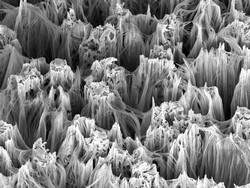EU standardises tests on the risks of nanomaterials
Nanomaterials have been on the scene for many years, and they are increasingly applied to numerous sectors ranging from consumer electronics to biomedicine and energy. Despite their unique properties compared to their larger counterparts, their long-term effects on human health and the environment remain poorly understood. Concerns have also been raised about the validity of current measurement and testing systems on the toxicity of nanoparticles. With majority funding from the EU, the ambitious NANOVALID(opens in new window) (Development of reference methods for hazard identification, risk assessment and LCA of engineered nanomaterials) project moved a big step forward to fill this gap. Project partners conducted a comprehensive series of round-robin inter-laboratory comparisons of measurement, dispersion, labelling and test procedures to measure size-dependent properties or effects of ENMs on organisms, including humans. These inter-comparison studies produced a variety of validated measurement and testing protocols with high reliability, reproducibility and accuracy that led to the establishment of new standard operating procedures (SOPs). To further increase validity, applicability and robustness of the tested methods, the team shared established SOPs, including SOPs for cell cultures and the synthesis of test materials, with other relevant European projects. Based on validated methods, they also developed reference methods and certified reference materials. New exposure models and experimental equipment were developed for simulating and generating real-world exposure concentrations. In particular, team members developed a new hot gas nano-sampler and a real-time exposure device that combines physical and biological assays for airborne particles. At the end, NANOVALID made an invaluable contribution to the standardisation of existing test procedures designed to accurately predict the risk of ENMs during production, use and disposal by suggesting New Work Item Proposals (NWIP) for new or already existing standards within CEN/TC 352 and ISO/TC 229. In addition, the developed and validated protocols should assist materials scientists and engineers in research and industries to create innovative ENMs that are safe by design. Benefits also abound for companies that commercialise nanomaterials in terms of reduced costs due to safer design, for manufacturer of products using ENMs due to safer handling, and finally for workers, consumers and the environment due to more reliable and efficient exposure control and protection measures. NANOVALID released a practical guidance document on safe handling of nanomaterials at workplaces that contains a brochure, field studies presentations, and general documents to comprehensively support risk assessment and management. The brochure provides safety strategies and protection measures for handling nanomaterials, and recommendations for storage and disposal of nanomaterials, protection from fire and explosion, training and instruction courses, and occupational health. Field studies simulating different exposure scenarios comprised detailed descriptions of several exposure measurements at pilot plants and laboratories.







